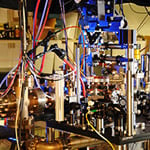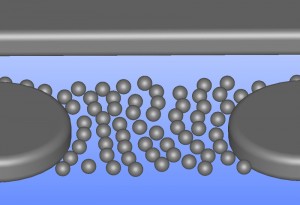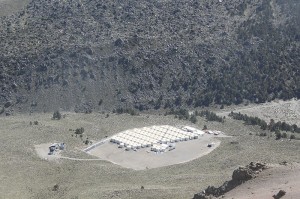
I am a graduate student working under Dr. Claudio Mazzoleni in the Environmental Optics Laboratory (EOL) at Michigan Tech. Currently I am studying the absorption spectra of water vapor to determine the appropriate transition lines suitable for my experiment. Water vapor is a critical gas present in the atmosphere in variable amounts that absorbs in various wavelength regions from the far infrared to the UV region. This results in hundreds of band spectra and thousands of transition lines. I am using the HITRAN database to simulate and select the optimal lines for my study using a Tunable Diode Laser. I am working to develop an instrument that can monitor the water vapor concentration in the Cloud chamber soon to be installed at Michigan Tech. Before stepping into this experiment, I studied the absorption band of CO2 using a tunable diode laser.
I have also been working on the development of a Quartz-Enhanced Photoacoustic Spectroscopy system. A piezo-electric quartz tuning fork has been successfully utilized in photoacoustic spectroscopy in a gas filled resonator for the study of light absorption by gases. Our group is determined to extend this technique to measure aerosol absorption in real world situations.
by Janarjan Bhandari
References:
Reliable optical measurement of water vapor in highly scattering environment, Park et.al (2009) Spectrochimica Acta Part A: Molecular and Biomolecular Spectroscopy
Quartz-enhanced photoacoustic spectroscopy, Kosterev et.al (2002) Optics Letters





